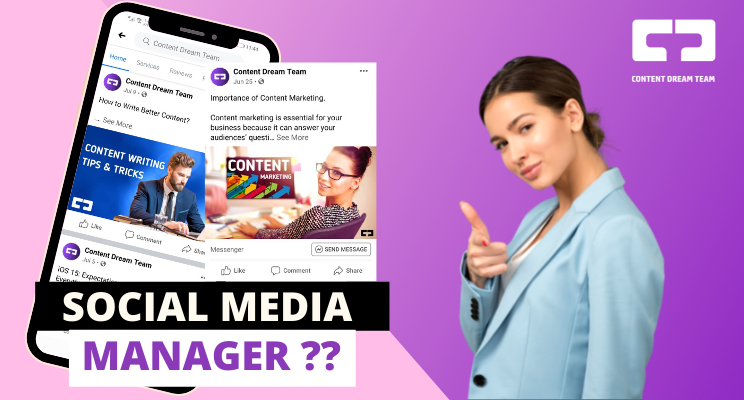
A content planner is essential for a social media strategy. This will help you plan and produce your posts. Because social media platforms require more detailed data, it is essential to plan your posts for each platform. You should include basic information like value and geo-targeting in your social media schedule. To manage your content calendar, you can also use Unbounce or CoSchedule. Other than the content you are writing, your calendar should also include information about your target audience.
It is possible to create a content calendar
Content calendars can help you organize your content strategy and plan it. You can use them as a spreadsheet, or as complex as Asana. You can add comments, excerpts, files, and files to each piece of content. A content calendar will allow you to create more content in a shorter amount of time. Here are some suggestions to help you create a content schedule that works for your needs.
- Create a buyer profile. This helps you understand what content buyers are looking for. It also helps you track the frequency at which you publish the content. For each type of content that you create, make a calendar. You'll be able to determine how often you will post each type of content, and how long it will stay live. The information you gather will help you to tailor your content calendar. You can also create a content calendar that you will use for various channels such as email and social media.
Create a social media content calendar
A social media content plan can help you allocate your resources efficiently. As long as the calendar contains all finalized posts, it can be as complex as you wish. This can streamline your day-to-day routine and free up time for brainstorming. The calendar can be imported to Google Calendar. Once you create a social media content planner, you can add more elements as required.

When putting together a social media content calendar, make sure to add metadata for each post. You can add metadata such as hashtags, channels and time of day. It can help you with your social media marketing efforts by adding relevant @-mentions. This way, you can see your plans from a glance. Once you have a schedule in place you can start planning content. Consider creating a weekly editorial plan if your team is working together.
Managing a content calendar with CoSchedule
A content calendar is essential for any business, regardless of whether it's a small business or one that has many users. A content calendar helps you prioritize tasks, meet deadlines, and avoid ambiguity. By creating a calendar, your team can stay on the right track. You can also assign tasks and let your team know exactly what they need.
Content marketers often have multiple tasks and projects. There may be more ideas than you have time, but not enough time to finish each one. CoSchedule has a solution. CoSchedule is an all-in-one marketing platform that helps you plan, manage and schedule content for your entire team. CoSchedule also allows you to work with your team members to create a content planner.
Unbounce lets you manage a content schedule
Managing a content calendar with Unb bounce is an excellent way to organize your blog posts and optimize the distribution of your SEO content. This tool also allows you to add tags and comments for better organization. It can be used to track your progress and incorporate SEO guidelines. A content calendar is an evolving document that should be easily updated as necessary. These are some helpful tips to create a content schedule that works for you and your company.

Your content strategy will be enhanced by the use of content calendars. They track when and where you will post your content. They provide data-driven insights about the effectiveness and impact of your content. If you're working with a complex content strategy, a content calendar can help you keep track of your marketing efforts. A content calendar can be used to track your marketing efforts, such as if content is to be released on a daily or weekly basis.
FAQ
What if I post only links to other sites' content.
Yes! This is called link building. Linking back to another site's content is a great way to increase traffic to your site. Make sure you only include links from reputable sources.
What is the difference of content marketing and content production?
Content marketing is the idea of all great brands having the same message. They are consistently delivering valuable information that people want and need.
Content marketers know how to create the right content for each channel at different times.
They also know how to implement a successful strategy in promotion and distribution.
They think strategically about their actions and the reasons they do them.
This is the core skill set needed to be a successful content marketer.
What is strategic Content Marketing?
Content Marketing is the art of creating valuable content for others to share across channels. It's all about giving people exactly what they want. The best companies are those that get this.
Strategic Content Marketing will ensure that you provide them with exactly what they require at the right moment.
It is important to understand what people care about, and to listen to their thoughts. Then, create high-quality content to answer their questions and solve their problems. This builds trust and loyalty, and makes sure you're always available when they need your product/service.
What is the best Content Management platform?
There are many different platforms out there today. Each one has its advantages and disadvantages. These are some of the most popular choices:
-
WordPress is simple to set-up and manage. Great community of users.
-
Wix – Setup and maintenance is much easier than WordPress You don't need any technical knowledge.
-
Squarespace - Best option for those who already have a website.
-
Blogger - A free blogging service.
-
Medium - A place to share your work.
-
Instagram – An image-based platform.
-
LinkedIn - A networking platform.
-
Facebook – A social network.
-
YouTube – Video sharing platform.
-
Pinterest - Image-based platform.
-
Google Analytics: Track visitor behavior.
-
Hubspot – Email marketing software.
-
MailChimp – Email marketing software.
Do I need an agency to do Content Marketing?
No! It is possible to create high-quality content online with a variety of tools. Agencies tend to charge higher prices for their services.
What is one of the main goals of content marketing?
Content marketing provides valuable and relevant information to customers. This should be done through different channels such as email campaigns, blog articles, white papers, etc. Delivering value to your audience is the key.
Why do I need to have a Content Marketing Strategy. Why send emails and post updates on social media?
Two main reasons you may choose to ignore a Content Marketing Strategy.
-
You may think that social media posts or email marketing is enough to get people talking.
-
If you haven't tried email marketing or posting on social media, you might assume that this type of content isn't practical.
Both of these assumptions are wrong.
Email marketing, as well as social media posts, can be excellent ways to communicate with prospects or customers. However, these are not sufficient.
An email campaign alone won't help you reach your goals. It should be part of a larger strategy. And social media posts alone won't help you achieve your goals either. They need to be part of an overall plan.
A Content Marketing Strategy is the key to this success. You can manage your entire content creation by creating a strategy with clear objectives.
As a result, you'll be able to spend more time focusing on other essential aspects of running your business, like growing your audience and increasing conversion rates.
A Content Marketing Strategy is a great tool, but it doesn't necessarily make it easy.
But, when you have a strategy in place, it makes all the difference.
Statistics
- According to our research, brand awareness, attracting traffic, and generating leads remain the key content marketing goals in 2022. (semrush.com)
- Content marketing produces 3X more leads per dollar spent. Content marketing costs 62% less than traditional marketing. (criteo.com)
- Progress indicators (0–100%) allow each team member to see how attainable each goal is and understand what remains to be accomplished. (semrush.com)
- According to the Content Marketing Institute, 70% of B2B marketers and 86% of B2C marketers surveyed use content marketing in some form or other. (criteo.com)
- Seventy-two percent business to business (B2B) (mailchimp.com)
- Forty-seven percent of buyers view 3 to 5 pieces of content before engaging with a sales representative. (mailchimp.com)
- Measure your goals with a progress indicator of 0-100%. Make your goals collaborative and transparent (semrush.com)
- This marketing strategy landed Ford a 15.4% conversion rate. (neilpatel.com)
External Links
How To
How do you create a content-marketing strategy?
It is important to first understand the content that you wish to create for your clients. Once you've established your content goals, it's time for you to create the content. This might mean that you need to create an editorial calendar, and plan where the content will be coming from. Content should always have a purpose. It doesn’t matter whether you are writing blog posts, social media updates or e-books. They all need to serve one purpose.
After you have decided what type of content you want, it is important to identify your target market. What are their interests and what do they care about?
Next, you need to identify your target market. Then, find ways to communicate with them. Although social media platforms can be a great way of connecting with people, there are many other options, including videos, podcasts, webinars and webinars.
After deciding how you will communicate with your market, the next step is figuring out what topics and types of content you want to cover. This goes back to the purpose of writing the content. What problem does the content solve? Is it useful? Do they think it will make their lives more easy?
Once you have an idea of the content you are writing, you can start to think about what you want to share. Do you want to share information about your industry? On current events? Are you focused on specific products or services The answer to this question defines your focus.
Finally, after answering all those questions, it's the right time to combine everything in one package.
You want to make sure every piece of content serves its purpose. You don't wish to waste anyone's energy or time, so ensure quality in all your content.
Don't forget that a great content marketing strategy has many moving parts.